TECHNOLOGIES AND STRATEGIES FOR
STUDYING GENE EXPRESSION CHANGES IN PSYCHIATRIC DISEASE
C. Anthony Altar, Psychiatric
Genomics Inc., Gaithersburg, MD
Recent evidence including family and
association studies has strongly implicated multiple genetic influences in the
etiology of many mental illnesses. Bipolar disorder, major depression,
schizophrenia and autism fall into this category, are likely to respond to new
treatment regimens, and present continuing, unmet medical needs. One new
approach to understanding the biochemical underpinnings of these disorders
exploits the power of microarray technologies that measure the mRNA expression
of many genes in human brain and human neurons. This contrasts with the
traditional approach of pursuing a single target for a given disease treatment,
or which search for incremental improvements on an existing target. Our
tripartite approach will be illustrated by experimental findings with (1) a
massively parallel, high throughput microarray platform to discover disease gene
changes in discrete regions of human brain, and analyzes cultured human neurons
and in vivo rat model systems in response to therapeutically effective
drugs. (2) Bioinformatic algorithms that identify gene groups and their
biochemical pathways involved in disease susceptibility and drug action.
The resulting ‘gene signature’ forms the basis for multi-parameter throughput
screening (MPHTSSM). (3) Using small molecular compounds from
diverse libraries, MPHTSSM is used to identify and optimize drug
candidates for further development. Together, this information from human
gene signatures, drug signatures, and MPHTSSM provides families of
new targets that will enable the discovery of therapeutics for each psychiatric
disease. Changes in mRNA expression associated with schizophrenia and
bipolar disorder, and mRNA alterations in rodents and cultured human neurons
challenged with the antibipolar medication valproic acid, will be discussed in
the context of our drug development strategies.
Slides:
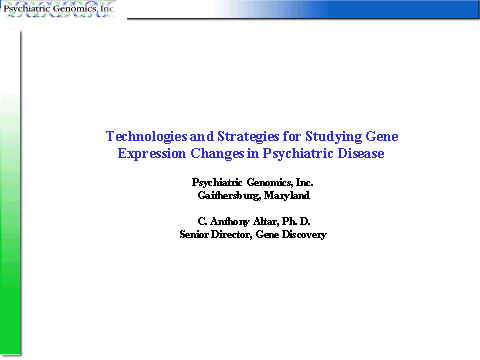 |
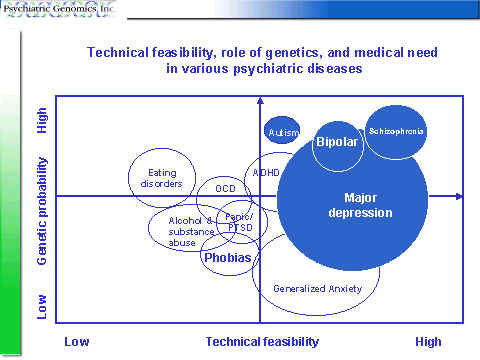 |
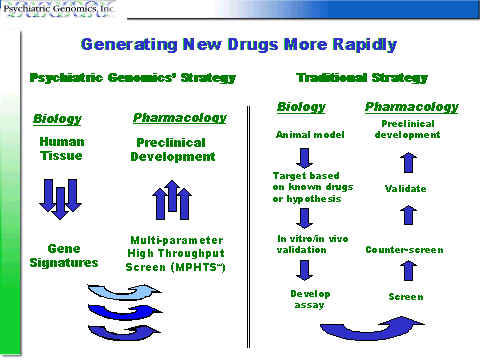 |
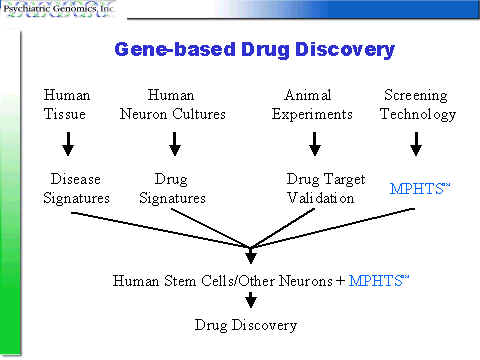 |
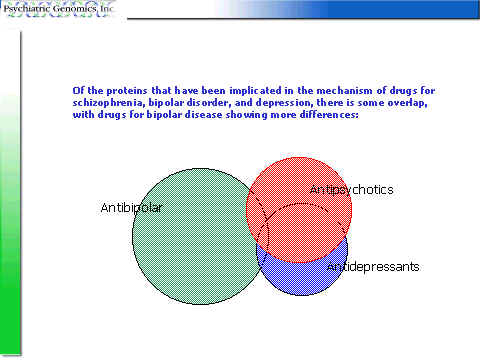 |
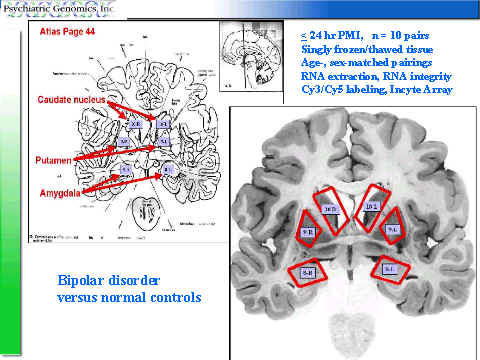 |
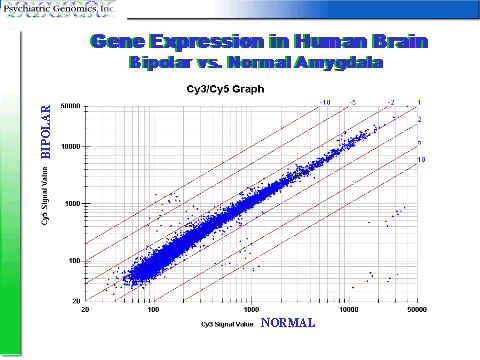 |
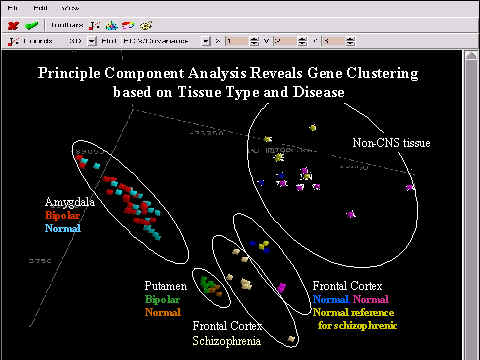 |
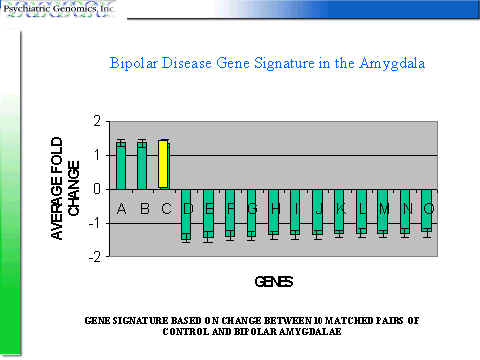 |
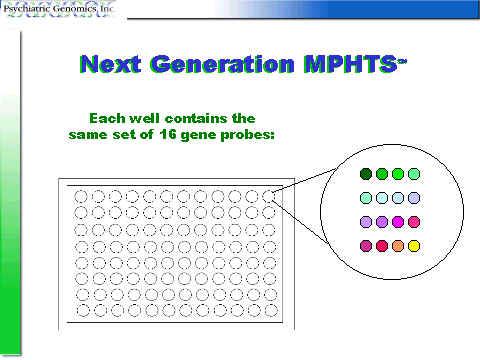 |
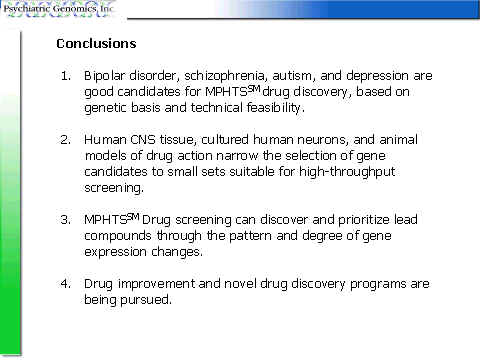 |
 |
